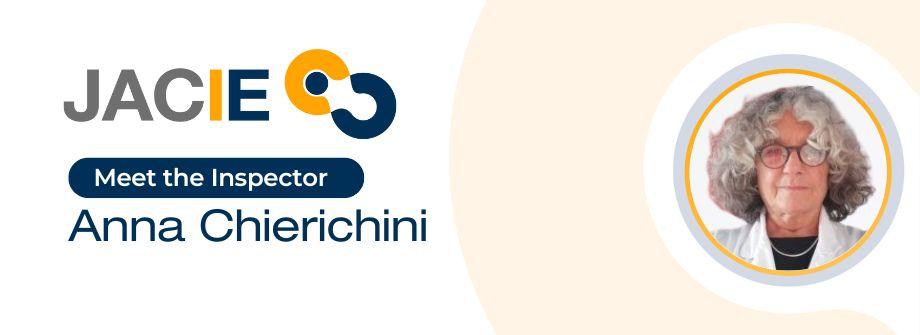
Inspectors are the backbone of JACIE; without them, there is no certification process. Becoming an inspector is a wonderful way to contribute to maintaining global quality standards. As the number of JACIE applications has increased, we are constantly looking for new inspectors to join our ranks. At the moment, we are particularly keen to hear of German, French and Spanish speaking Clinicians and Quality Managers.
Each month, you will have the opportunity to meet with one of our JACIE Inspector who will share his/her experience.
Read our interview with Anna Chierichini.
Introduce yourself and your role(s) and position(s) within EBMT and outside of EBMT
In 2018, I retired as Director of “Programma Trapianto Cellule Staminali Emopoietiche” Ematologia-Ospedale S. Giovanni Addolorata, Rome, Italy.
Since then, I have been a JACIE Inspector (Clinical, BM, IEC), Italian National Transplant Centre (CNT/CNS) Clinical Inspector, adjunct professor in haematology at the Università Cattolica del Sacro Cuore, adjunct professor in Oncology-Università Tor Vergata in Rome and haematologist consultant working in various facilities in Rome.
Since April 2025, I have been Clinical Inspector for the JACIE Accreditation Committee (JAC).
Why did you decide to become a JACIE inspector?
I decided to become a JACIE Inspector close to retirement, as I felt it would be useful mainly for the following reasons:
- To apply my experience in the field of stem cell transplantation;
- To understand and learn how centres organise their activities according to their resources;
- To meet colleagues as an inspector and discuss issues and improvement challenges.
After retirement, I have more freedom in managing my time. I believe this is an excellent opportunity to enhance my knowledge, stay connected with the transplant community, and contribute to continuous improvement.
What has been the most memorable inspection that you have ever done?
I can mention two experiences:
In February 2020, as Team Leader, my colleagues and I were starting an inspection in Italy. On those very days, the national lockdown due to the Covid emergency began.
We faced the dilemma of whether it would be better to stop and postpone the inspection or to complete it. After a joint evaluation with the inspector team and the Transplant Centre team, we decided to proceed and complete the visit, following the safety regulations issued by the Italian Government.
Everything went well, and the inspection was successfully completed.
In 2023, I was appointed Team Leader for an inspection at a very large centre in the North of the UK.
I was the only Italian in the inspection team; English is my second language, so I was very worried about communicating effectively with the Transplant team, especially when discussing certain issues.
Fortunately, everyone was extremely supportive. This spirit of collaboration is an important part of JACIE inspections.
What ‘keys to successful JACIE certification’ can you share with us?
In my opinion, the following points should be considered before, during, and after the inspection:
- Establish close cooperation with the other inspectors
- Ensure thorough knowledge and evaluation of the documents
- Gather information about the wider Hospital structure
- Request additional information if necessary
- Create a friendly atmosphere with all personnel involved in transplantation — the inspection aims to help resolve the centre’s shortcomings wherever possible
- Visit the facility thoroughly
- Write the report as soon as possible, while details are still fresh in your mind
- Send the report and checklist to JACIE as planned
- Remember to request assessment of EOC (Evidence of Correction) for Non-Compliant (NC) and Partially Compliant (PC) standards
How has your career/work benefited from being a JACIE inspector?
I take part in audits prior to the start of accreditation for some transplant centres, when requested.
My experience as a JACIE Inspector enables me to provide advice on SOPs, documentation, or structural deficiencies, and to help address issues before the official visit.
Furthermore, this experience has supported my consultancy work.
Do you have any tips or advice for anyone who aspires to become a JACIE Inspector?
Anyone wishing to become a JACIE Inspector should remember that the role requires time and commitment, but it helps centres improve their work and ultimately benefits patients.
In addition, you will meet colleagues from different countries, allowing you to compare practices and enrich your professional experience.
It is a wonderful opportunity, and I recommend it to as many colleagues as I can.